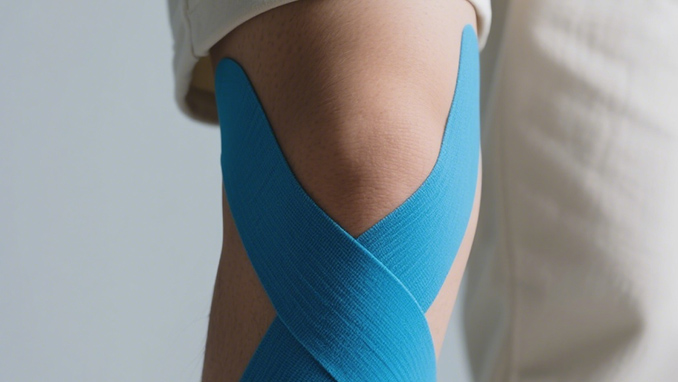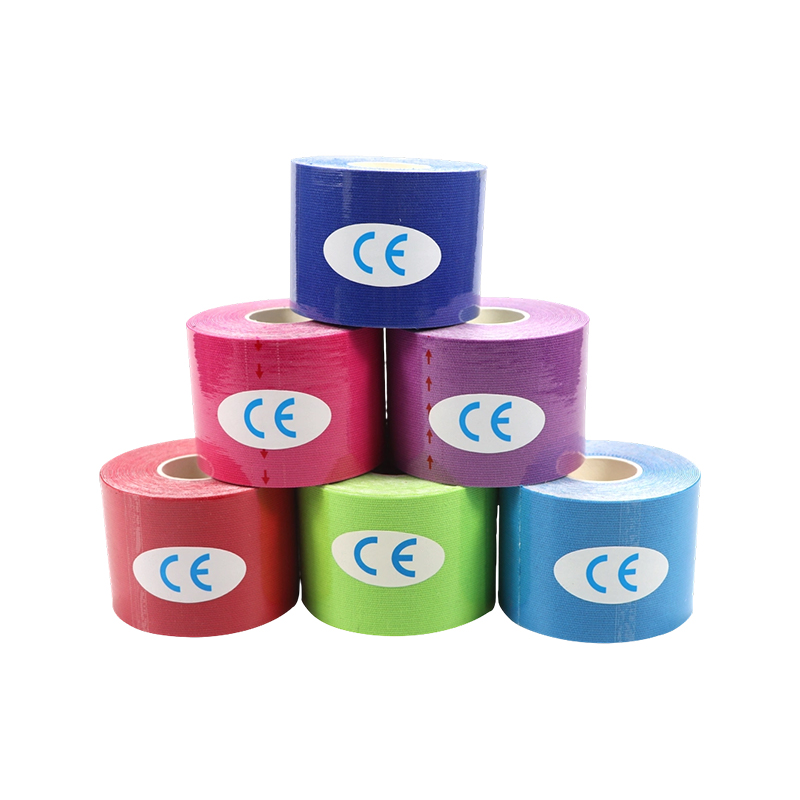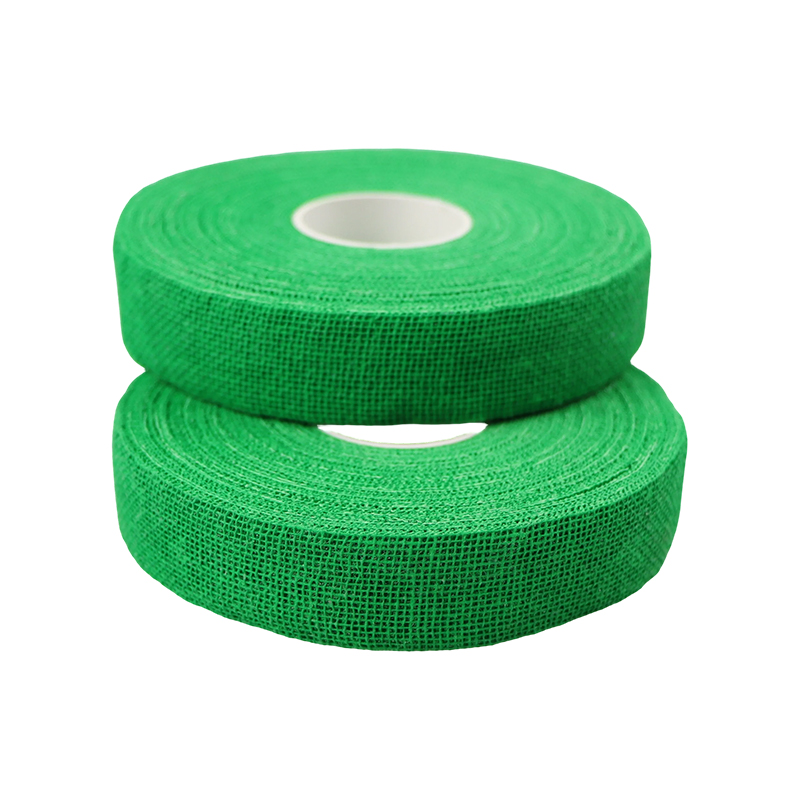

Company

Solutions

Knowledge&Blog

Contact Us
Posted by Qinghong
Cotton Cohesive Bandages: Innovations and Applications in Modern Care
Introduction
In modern healthcare, sports medicine, veterinary care, and even personal wellness, bandages play a crucial role in protecting injuries, supporting joints, and aiding recovery. Traditionally, bandages have been essential tools for wound management, but they often come with limitations such as poor adhesion, frequent slippage, and potential irritation to the skin. Patients, athletes, and caregivers frequently encounter these issues, leading to discomfort and reduced effectiveness of care.
The emergence of cotton cohesive bandages has begun to address these challenges. Unlike conventional bandages that may require clips, pins, or adhesive layers, these modern solutions adhere to themselves without sticking to the skin or hair, providing a secure and comfortable fit. Their lightweight and breathable materials ensure that wounds and joints remain supported without compromising comfort.
These advanced bandages are not only transforming traditional wound care but are also finding applications in a wide range of scenarios—from sports injuries and rehabilitation to veterinary treatments and sensitive skin care. They offer a balance of elasticity, self-adhesion, and skin-friendliness, making them ideal for both professional and personal use.
Materials and Characteristics of Cotton Cohesive Bandages
Cotton cohesive bandages have become an essential tool in modern care due to their combination of comfort, flexibility, and reliable adhesion. At the core of these bandages is a thoughtful selection of materials designed to optimize both functionality and user experience.
The primary material in most cotton cohesive bandages is natural cotton, valued for its softness, breathability, and skin-friendly properties. Cotton ensures that the bandage remains comfortable during prolonged use and reduces the risk of skin irritation. For applications that require additional support, such as joint stabilization or athletic injuries, elastic fibers are incorporated into the cotton matrix. This combination allows the bandage to stretch and conform to the body while maintaining gentle compression, which is critical for effective injury management and recovery.
Another key material is the self-adhesive layer, which enables the bandage to stick to itself rather than the skin or hair. This feature makes it especially suitable for sensitive areas or applications involving pets, where adhesion to hair or skin can be problematic. Some specialized versions, like hair and skin safe cohesive tapes, incorporate low-irritation adhesives, ensuring that the bandage can be applied and removed without discomfort.
In addition to material composition, these bandages are designed to optimize key performance characteristics:
- Self-adhesion: Sticks securely to itself while remaining non-adhesive to skin and hair.
- Breathability: Promotes airflow to prevent moisture accumulation and skin maceration.
- Elasticity: Provides support without restricting movement.
- Ease of use: Can be torn by hand, allowing quick application without scissors.
Comparison of Different Bandage Materials
| Material Type | Elasticity | Breathability | Self-Adhesion | Skin Friendliness | Typical Applications |
|---|---|---|---|---|---|
| 100% Cotton | Medium | High | Medium | High | General wound dressing, light support |
| Cotton + Elastic Fibers | High | Medium | High | Medium | Sports support, joint stabilization |
| Low-Irritation Adhesive + Cotton | Medium | High | High | High | Sensitive skin, pet care |
| Elastic Fiber + Breathable Mesh | High | High | Medium | Medium | Sports protection, rehabilitation |
The above comparison highlights how different material compositions cater to specific needs. For example, cotton with elastic fibers is ideal for situations where movement and flexibility are required, while low-irritation adhesive versions are critical for sensitive skin or animal care.
The thoughtful combination of materials in cotton cohesive bandages is what sets them apart from traditional bandages. Traditional cotton or gauze bandages often require external clips or tapes to remain in place, which can cause discomfort or leave adhesive residues. In contrast, modern cohesive bandages rely on material science and design innovation to achieve both effectiveness and comfort.
Functional Advantages of Cotton Cohesive Bandages
Cotton cohesive bandages offer a range of functional advantages that distinguish them from traditional bandaging solutions. These benefits are critical for medical professionals, athletes, pet caregivers, and everyday users who seek both efficiency and comfort.
1. Self-Adhesion and Ease of Use
One of the primary benefits of cohesive bandages is their self-adhesive property. Unlike conventional bandages that require clips, pins, or external adhesives, these bandages stick only to themselves. This feature ensures that the bandage remains securely in place while minimizing the risk of skin irritation or hair entanglement. Additionally, many cohesive bandages can be torn by hand, allowing for quick and precise application without the need for scissors.
2. Elasticity and Support
The integration of elastic fibers in cotton cohesive bandages allows for flexibility and gentle compression. This elasticity provides support to joints and muscles, making them ideal for sports injuries, rehabilitation, and physical therapy. Elastic cohesive bandages help reduce swelling, stabilize affected areas, and promote better circulation, all while maintaining comfort and mobility.
3. Breathability and Comfort
Another important advantage is the breathability of these bandages. Materials such as cotton and breathable mesh allow air to circulate, preventing moisture buildup that can lead to skin maceration or irritation. Users can wear these bandages for extended periods without discomfort, which is particularly valuable for post-operative care or long-duration athletic use.
4. Skin and Hair Safety
Specialized versions of cohesive tapes, such as hair and skin safe cohesive bandages, are formulated with low-irritation adhesives. This makes them suitable for sensitive skin, including infants, the elderly, and animals. These products reduce the risk of allergic reactions, rashes, or hair pulling, making them versatile for multiple applications.
5. Advantages over Traditional Bandages
Compared to traditional cotton or gauze bandages, cohesive bandages provide several key improvements:
- Secure adhesion without the need for pins or clips.
- Reduced risk of skin irritation and hair entanglement.
- Easier application and removal, particularly in emergency or fast-paced environments.
- Consistent compression and support due to elastic properties.
Functional Advantages Comparison
| Function | Traditional Bandages | Cohesive Bandages | Advantage |
|---|---|---|---|
| Adhesion | Requires clips or external tape | Sticks to itself | Easier application, no skin damage |
| Comfort | Medium | High | Soft cotton and breathability reduce irritation |
| Flexibility | Limited | High | Elasticity provides joint/muscle support |
| Skin/Hair Safety | Medium | High | Non-adhesive to skin/hair, low irritation |
| Reusability | Low | Medium | Can be repositioned or adjusted without losing adhesion |
Applications Across Different Scenarios
Cotton cohesive bandages have proven to be versatile products that cater to a wide range of applications. Their combination of self-adhesion, elasticity, and skin-friendly properties allows them to meet the needs of different users, from medical professionals to athletes and pet caregivers. Understanding these applications can help users select the most suitable type of bandage for each situation.
Bandage Applications Across Different Scenarios
| Application Scenario | Key Focus | Recommended Bandage Type | Expected Benefit |
|---|---|---|---|
| Medical & Healthcare | Wound protection, post-op care | 100% cotton cohesive bandage | Breathable, comfortable, secure fixation |
| Sports & Rehabilitation | Joint and muscle support | Cotton elastic cohesive bandage | Elastic support, reduces swelling, enhances mobility |
| Veterinary & Pet Care | Post-surgery protection, fur-safe | Hair and skin safe cohesive tape | Non-irritating, secure, prevents licking/scratching |
| Cosmetic & Sensitive Skin | Sensitive skin, delicate dressing | Low-irritation cohesive tape | Comfortable, safe for repeated use, gentle adhesion |
Selection Guide and Usage Tips
Choosing the right type of cohesive bandage is essential to maximize its effectiveness and ensure safety. With the variety of options available, from standard cotton cohesive bandages to elastic versions and hair-and-skin safe tapes, understanding the differences can help users make informed decisions.
1. Identify the Purpose of Use
The first step in selection is identifying the specific purpose:
- Wound care: Requires breathable, soft, and non-irritating materials.
- Joint support and sports injuries: Requires elastic fibers for compression and flexibility.
- Pet care: Requires fur-safe adhesives to avoid hair entanglement.
- Sensitive skin or cosmetic applications: Requires low-irritation adhesives for repeated use.
2. Consider Size and Width
The width of the bandage affects both coverage and compression:
- Narrow bandages (2.5–5 cm) are ideal for small areas or precision wrapping.
- Wider bandages (7–10 cm) provide more support for joints and larger muscle groups.
3. Evaluate Elasticity and Adhesion
Elastic cohesive bandages provide compression and support, whereas non-elastic versions are suitable for simple fixation. Users should consider how much stretch and compression are required for the intended application.
4. Skin Safety and Comfort
For sensitive areas, low-irritation or skin-safe versions should be chosen to minimize the risk of rashes, allergic reactions, or hair pulling. Testing a small patch before extensive application is recommended, especially for infants, elderly patients, or pets.
5. Application Techniques
Proper application ensures effectiveness:
- Start wrapping from the distal end and move proximally.
- Avoid wrapping too tightly to prevent restricting blood flow.
- Smooth the bandage to eliminate wrinkles that could cause pressure points.
- Overlap each layer by 50% for optimal adhesion and support.
Bandage Selection Guide Based on Application
| Use Case | Recommended Material | Suggested Width | Key Considerations |
|---|---|---|---|
| Wound Care | 100% cotton | 5 cm | Breathable, soft, secure but gentle |
| Sports & Rehabilitation | Cotton + elastic fibers | 7.5 cm | Provides compression, supports joints/muscles |
| Pet & Veterinary Care | Low-irritation adhesive + cotton | 2.5–5 cm | Fur-safe, non-irritating, secure fixation |
| Sensitive Skin & Cosmetic | Hair and skin safe cohesive tape | 2.5–5 cm | Test on small area, gentle adhesion |
Common Mistakes to Avoid
- Wrapping too tightly or too loosely.
- Using the wrong width for the area.
- Ignoring skin sensitivity or allergic reactions.
- Reusing bandages in a way that compromises adhesion or hygiene.
By carefully considering these factors, users can select the most appropriate cohesive bandage type, ensuring both effectiveness and comfort across a variety of applications.
Conclusion and Recommendations
Cotton cohesive bandages have emerged as a modern solution that addresses the limitations of traditional bandages. Their combination of self-adhesion, elasticity, breathability, and skin-friendliness makes them versatile tools suitable for medical, sports, veterinary, and cosmetic applications. Across industries, they are valued for their ability to provide secure support, enhance comfort, and improve efficiency in both routine and specialized care.
Key Takeaways:
- Versatility – These bandages cater to a wide range of applications, from wound care and rehabilitation to pet care and sensitive skin management.
- Enhanced User Experience – The breathable, soft materials and self-adhesive properties reduce discomfort, irritation, and slippage.
- Efficiency and Convenience – Easy-tear designs, elastic properties, and self-adhesion simplify application, save time, and allow for precise adjustments.
- Safety and Comfort – Specialized versions like hair and skin safe cohesive tapes provide additional protection for sensitive skin and fur, minimizing adverse reactions.
- Innovation and Market Growth – Advances in material science, eco-friendly manufacturing, and smart designs position cohesive bandages for continued growth across multiple sectors.
Recommendations for Users:
- Choose the Right Bandage Type: Match material, width, and elasticity to the specific application, whether it’s wound care, joint support, pet care, or cosmetic use.
- Follow Proper Application Techniques: Ensure correct tension and overlapping layers to maximize support and prevent circulation issues.
- Consider Skin and Hair Sensitivity: For infants, elderly patients, pets, or those with sensitive skin, select low-irritation or hair-and-skin safe versions.
- Stay Informed on Innovations: Keep abreast of new material developments, eco-friendly options, and design improvements to optimize care outcomes.
By understanding their characteristics, functional advantages, applications, and correct usage, professionals and individuals alike can harness the full potential of these versatile products, ensuring better outcomes in health, recovery, and overall well-being.
NEWS











 English
English  русский
русский  Français
Français  Español
Español  عربى
عربى 





 ENG
ENG

